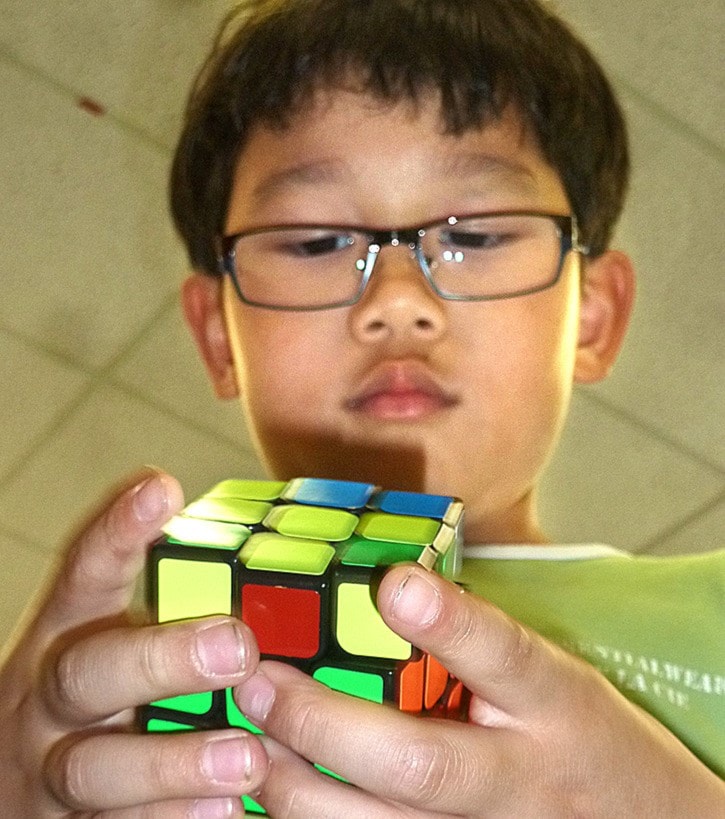For Michael Chan, solving the Rubik’s cube is an effort that takes maybe two minutes, sometimes less.
It’s “easy,” the six-year-old states, as he deftly manipulates one of the six-sided toys, surrounded by a group of his peers at Chantrell Creek Elementary.
“My fastest time was under two (minutes).”
Michael makes solving the 3-D puzzle look like a breeze, likely without even considering the benefits he is gaining from learning and practising the skill.
 But they’re benefits – analytical skills, patience, problem-solving, perseverance, focus and improved eye-hand co-ordination among them – anyone can gain, says Michael’s mom, Shirley Chan.
But they’re benefits – analytical skills, patience, problem-solving, perseverance, focus and improved eye-hand co-ordination among them – anyone can gain, says Michael’s mom, Shirley Chan.
Michael’s interest in the cube led Chan to, this month, launch a school club focused on learning how to solve it.
“I want more children to learn it and do it,” she said. “I don’t want them to give up. I find it’s quite good for them to use their brain in this way – and less TV.
“When I talk to a lot of parents… a lot of parents don’t know how to do it and their children don’t know how to do it.”
The 3-D combination puzzle was created in 1974 in Budapest, by architecture professor Erno Rubik, who was looking for something to help him teach geometry principles.
More than 350 million of the cubes have been sold worldwide since, and the solution – according to information on the Rubik’s website (https://rubiks.com/blog/how-to-solve-the-rubiks-cube) can be learned in about 45 minutes.
At the Chantrell club’s second meeting, Chan talked students and parents through one of the steps, guiding them through written instructions.
One student (who cannot be named) summarized the formula:
“There’s a first layer and then there’s a second layer and then there’s a third layer,” he said. “After you do the third layer, you can basically fix the thing.”
Michael’s brother, Alexander, in Grade 3, said it took him about two weeks to learn the solution. While Michael is quick at it, “sometimes I’m faster,” the sibling said.
For Megan Carelli, the club provides an opportunity to spend even more time with her son, Xander, who attends Grade 1 at the school. The six-year-old wanted to get involved, she said.
“I spent the whole weekend learning (the solution),” Carelli said, of preparing for the club’s May 5 launch. “That’s what I got for Mother’s Day, a speed cube.”
Carelli said solving the cube is all about memorization, and acknowledged the additional benefits of the process.
Xander, she added, is “very proud” of what he has accomplished with the cube.

